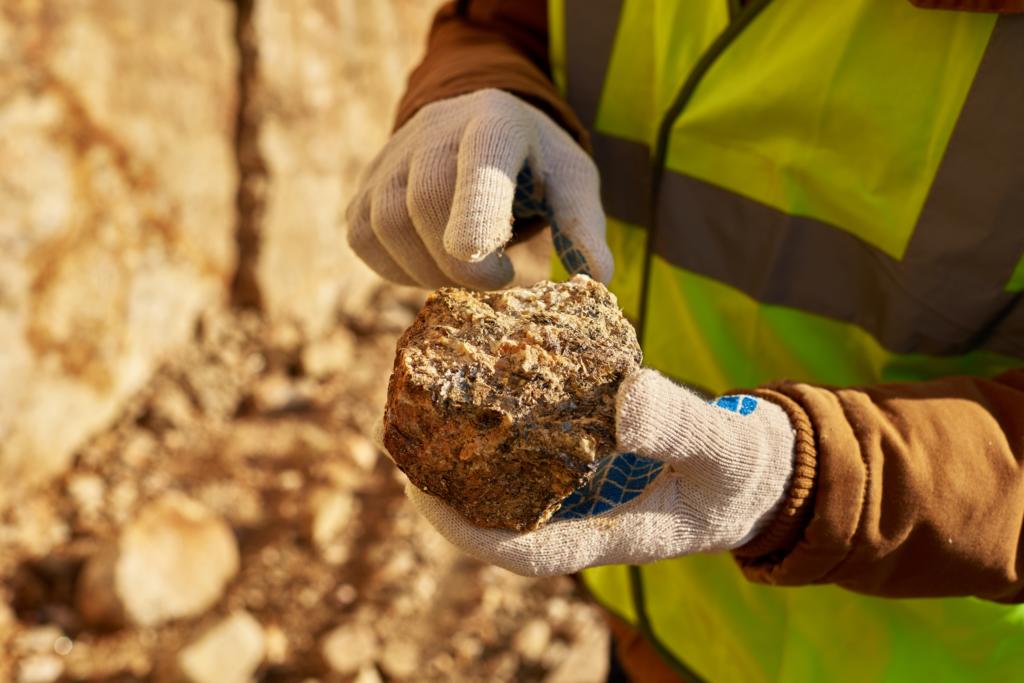
What can the owner of mining and mineral rights do if their mineral rights are interfered with? Richard Bagwell, partner in Stephens Scown’s Property Litigation team, looks at how damages are calculated at common law in England and Wales.
Different European jurisdictions will take different approaches to the assessment of loss, but this article focuses on the situation in England and Wales, where the ownership of mines and minerals is often separated from the ownership of the surface.
Damage or interference may occur in a variety of circumstances, such as development of the surface. What damages can be claimed when the surface owner or occupier damages or interferes with the mineral rights in those circumstances?
Who owns what?
At common law mines, quarries and minerals are part and parcel of the land. Consequently the owner of surface land is entitled prima facie to everything beneath or within it, down to the centre of the earth. Exceptions include mines of gold and silver, which belong to the Crown, and coal and petroleum, which are subject to statutory provisions.
The ownership in mines under land may be (and often is) severed from the ownership of the surface. The presumption arising from surface ownership can be rebutted by evidence showing that the ownership of the surface has been severed from the mines and minerals.
What is the measure of damages?
There are a number of different claims that can be brought for damages:
Value of minerals extracted v. value of the land
At common law, when minerals are abstracted, they immediately become the property of the mine owner. You would think that the damages would be the value of the extracted minerals. However, the damages that the owner can claim are based on what the owner has lost, which is the value of the minerals as they existed unworked in the mine.
That said, a claim can be brought for an account of minerals wrongfully abstracted. The defendant can be required to account for the value of the mineral raised, i.e. the market price or value, after making certain allowances.
The owner of minerals which have been wrongfully abstracted may also bring a claim of “conversion” against the trespasser or, if they have sold the minerals, a claim for money received from the sale.
Trespass
Damages for trespass are compensatory, which means that the owner is entitled to damages for the loss suffered. That said, in certain cases, the Courts have found that a landowner can recover damages even when there is no loss in the strict sense, but there has been a significant benefit to the trespasser from the use of the land.
Damages are also recoverable for consequential injury resulting from the wrongful working of minerals, such as for minerals rendered unworkable.
What about interference with other rights?
Very often a mineral title will have other rights attached to it, such as easements to enter the surface or to win and work minerals. If those rights are interfered with there may be a legal nuisance. Like trespass, damages in nuisance are compensatory.
Some examples
A common example of damage to mineral rights is a housing estate being built where the minerals are reserved to a third party. Theoretically, the minerals can extend to the surface. The foundations of the houses and any sub-surface infrastructure, such as pipes and cables, could all result in extraction of minerals during excavation. The buildings and other structures being built all have the potential to interfere with the easements attached to the mineral rights, such as the right to enter the surface to survey for minerals or to undertake excavations.
In this example, the value of the minerals being extracted by relatively shallow excavations is likely to be negligible. The more likely claim is for damages for trespass and interference with any easements.
As a claim for damages in trespass is compensatory, the owner of the minerals has to prove a loss. The loss will normally be the diminution in value of the mineral title. However, a number of factors can affect the value of that title, including an assessment of the likelihood of obtaining permission to extract the minerals and the non abstracted value of the minerals themselves. A valuer may conclude that the prospect of abstraction is quite low with the result that there is little loss, but a significant benefit to the developer.
With a claim for trespass and interference with rights, the primary remedy of the mineral title holder will be to seek an injunction to prevent the trespass. The Court has the discretion to award the injunction or award damages in lieu. When awarding damages in lieu, it will be for the Court to decide whether, in this scenario, the appropriate measure of loss is the diminution in value of the minerals and the attached rights, or a sum equivalent to the economic value to the developer of being able to trespass, which are likely to produce very different figures.
Richard Bagwell is a partner and property litigation expert in the mining and minerals team at Stephens Scown. Richard can be contacted on 01392 210700 or by email at solicitors@stephens-scown.co.uk.
